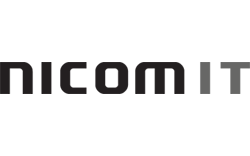Now is the high-tide of the year,
And whatever of life hath ebbed away
Comes flooding back with a ripply cheer
─ From What is So Rare As a Day in June, by James Russell Lowell
There is something about June that makes living in Nova Scotia worthwhile. The browns of late winter transformed to greens and our spring cleanup out of the way, we can now look forward to warm lazy summer days.
But while things start to slow down for you, there is no reason for your website to hold back. To keep it working effectively for you all summer, you can do a bit of website “spring cleaning” by setting up landing pages.
A landing page is simply a web page on which you want people to land when they are searching for a specific product or service. Its purpose is to first get found and then to guide the searcher to a desired action.
The key to a landing page is to display the required information as concisely as possible. It should contain such things as a brief description of the product or service, a client testimonial, the ability to download a whitepaper (an action you can track), a toll free number, some nice graphics, a way to subscribe to a newsletter, and a form or email popup to request more information.
You might also want to provide visitors with a place to click for a live chat with an operator; see www.clickandchat.com for an example of how this works.
The other key to a landing page is to optimize it for search engines. I’ve written articles on this already but I’ll reiterate that this has to be done properly to have your site upgraded by the search engines as opposed to downgraded.
You can also purchase “Adwords” from Google that will give you preferential placement along the top or along the side of the Google search results page. Adwords is an article in and of itself, but to prove it works, we set up a little experiment for you to try.
Type in “Herald BT Column” in Google, then hit Enter and look at the right side of the page that comes up. The ad you will see became available for viewing the second we set it up in Google. Think of the potential.
And by clicking on it you just cost us 10 cents, thank you very much! On that note, you can limit how much money you are willing to spend so that your ad campaigns don’t get out of hand. (In this example, we are paying Google 10 cents per click, and we are limiting it to 1000 visitors.)
A landing page can be a standalone page if you wish, but you may choose to have it be part of your corporate web site. That way, if a visitor is interested in researching your organization, they can do so via the website menu.
The great thing about landing pages is not only do they work, but they force you to think about what your main products and services are and how to concisely describe them. After you have organized your website with this mindset, you will have cleaned it of a lot of clutter and made it much more pleasant to traverse.
Once your basic landing pages are in place you can then start experimenting to see what works and what doesn’t. There are all types of analytical tools you can use to gauge what is effective. As we like to say in the industry “the ink never dries on a web site”, so you can tweak it until you have just the results you want, these being a) be found, b) be clicked, and c) have a specific call to action taken.
Also of course, d) an increase in sales. And what is so rare about wanting that?

